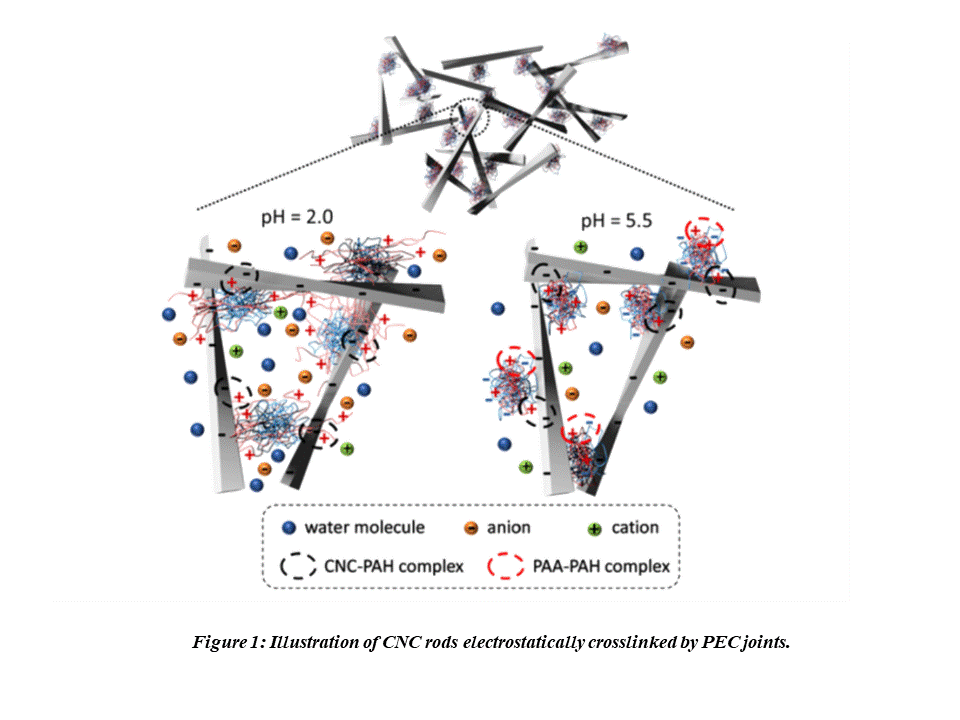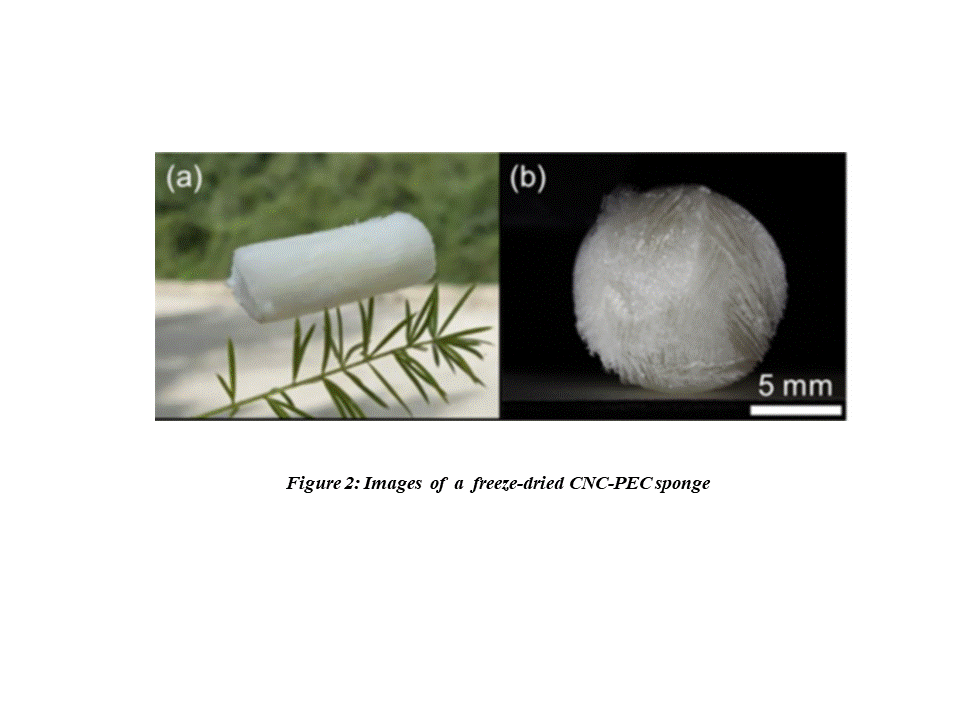
Polyelectrolyte complex sponges with pH responsiveness
Sponges composed of nanorods or short polymer nanofibers are useful for absorption materials, thermal insulation, and tissue engineering scaffolding. The main challenge of creating a 3D skeleton from nanostructured elements stems from the inability to form effective entanglements between individual components. While as an alternative, a possible solution is to form joints by crosslinking individual particles with physical or chemical bonds. Obviously, the structural stability of the skeleton and the effective physical and mechanical properties of sponges are decisively dependent on the material composition and interaction of the links and joints.
This work addresses these challenges by creating sponges with a skeleton made up of links of CNCs (anionic cellulose nanocrystal) and joints made from poly (acrylic acid) (PAA) and poly(allylamine hydrochloride) (PAH) that can electrostatically bind the CNCs and respond to pH-stimuli (see Figure 1). Rheological measurements of the sponge precursor suspensions proved a massive yield stress increase, indicating strong electrostatic interactions between the overall cationic polyelectrolyte complex (PEC) and anionic CNCs. Cryo-TEM imaging of the suspension confirmed the formation of a global percolated network, consisting of CNC rods, bridged by PEC clusters of 10–20 nm diameter. Freeze-drying of the CNC-PEC suspensions without any further manipulation or crosslinking led to highly porous sponges (see Figure 2). The as-prepared sponges were very light (35–93 mg/cm3) and demonstrated a lamellar structure with ~1.5–3 μm lamella thickness and 40–150 μm interlamellar distance. Dry specimens exhibited a compression modulus increase from 7 up to 62 kPa with PEC concentration rise. In response to immersion into water at different pH, the sponges showed morphologically and mechanically pH-responsive behavior. The intensive complexation between sponge constituents is also reflected in a reduced ability to bind charged dyes at neutral pH values. Decreasing the pH results in an increased adsorption efficiency for anionic dyes, while raising the pH improves the cationic dye adsorption.


Powered by Eventact EMS